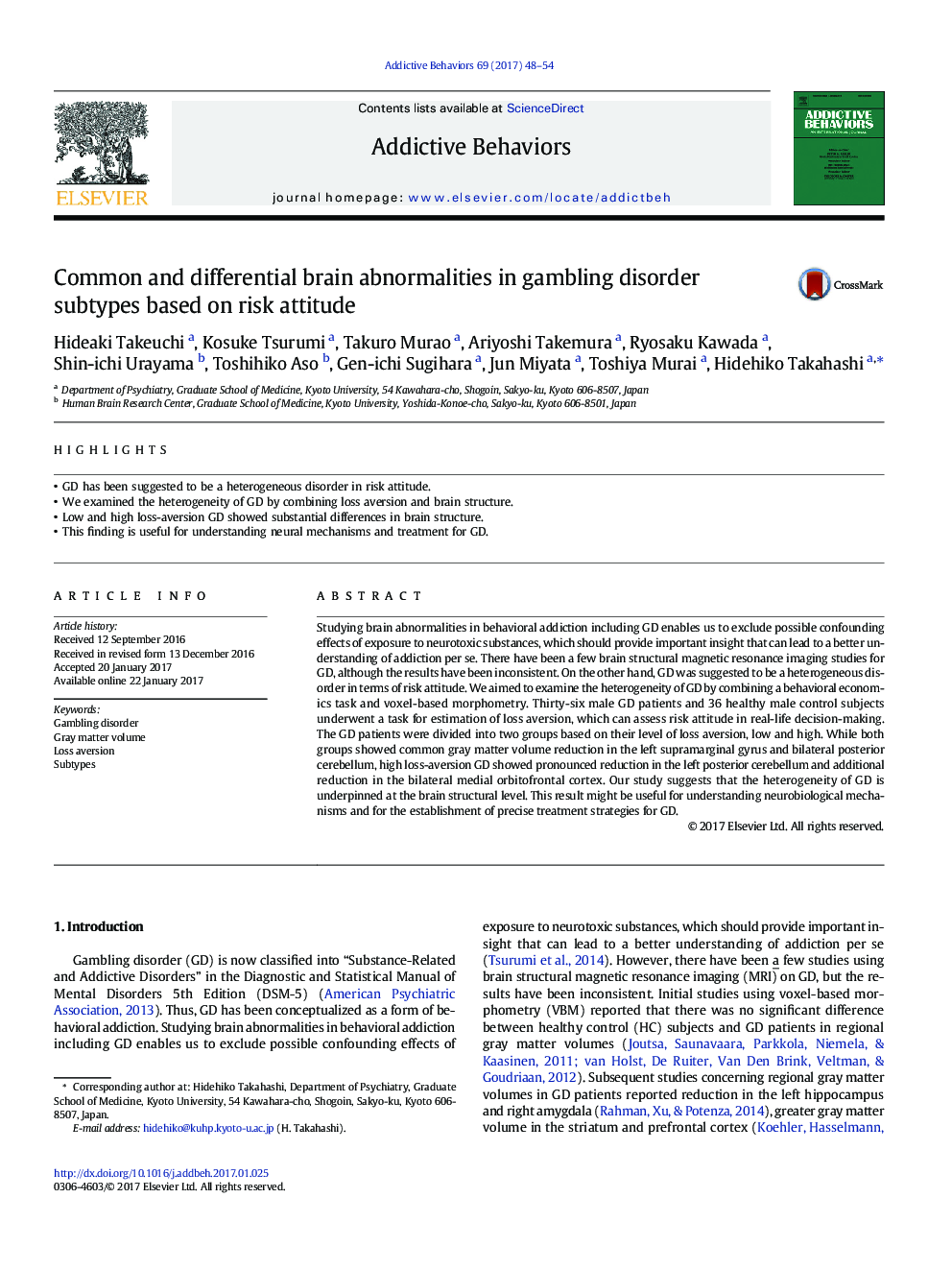| Article ID | Journal | Published Year | Pages | File Type |
|---|---|---|---|---|
| 5037725 | Addictive Behaviors | 2017 | 7 Pages |
â¢GD has been suggested to be a heterogeneous disorder in risk attitude.â¢We examined the heterogeneity of GD by combining loss aversion and brain structure.â¢Low and high loss-aversion GD showed substantial differences in brain structure.â¢This finding is useful for understanding neural mechanisms and treatment for GD.
Studying brain abnormalities in behavioral addiction including GD enables us to exclude possible confounding effects of exposure to neurotoxic substances, which should provide important insight that can lead to a better understanding of addiction per se. There have been a few brain structural magnetic resonance imaging studies for GD, although the results have been inconsistent. On the other hand, GD was suggested to be a heterogeneous disorder in terms of risk attitude. We aimed to examine the heterogeneity of GD by combining a behavioral economics task and voxel-based morphometry. Thirty-six male GD patients and 36 healthy male control subjects underwent a task for estimation of loss aversion, which can assess risk attitude in real-life decision-making. The GD patients were divided into two groups based on their level of loss aversion, low and high. While both groups showed common gray matter volume reduction in the left supramarginal gyrus and bilateral posterior cerebellum, high loss-aversion GD showed pronounced reduction in the left posterior cerebellum and additional reduction in the bilateral medial orbitofrontal cortex. Our study suggests that the heterogeneity of GD is underpinned at the brain structural level. This result might be useful for understanding neurobiological mechanisms and for the establishment of precise treatment strategies for GD.
